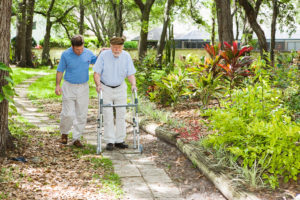Live 24/7 Call Answering: 609-881-1400

There are several types of fractures that can occur, which depend on the amount of force of the trauma that caused the injury:
Treatment and healing time – if possible – will depend on the severity of the fracture and where it is located. One of the most common injuries when there is a fall for an elderly person is a hip fracture. These fractures are particularly difficult to treat and usually require a surgery, including implanting a prosthetic hip into the leg bone. Deconditioning sets in rapidly in the elderly and, as such, hip fractures frequently lead to immobility, bed sores, eating problems, and increased infections. Even in the best of situations, the person will need some form of rehab in order to walk again.
Fractures are caused by a trauma to the bone. In the elderly, this generally means they have fallen or been dropped by the nursing home staff. Falls typically happen in nursing homes when the elderly are not properly supervised, are not taken to the bathroom enough, or when there are not enough staff to respond to call bells and alarms in a timely fashion. It is also well known that residents with dementia or Alzheimer’s who aren’t on a bathroom schedule, or are suffering from a urinary tract infection, at times get up to go to the bathroom without assistance and forget to use the call bell. In an understaffed facility, there is frequently no ability to get to the folks who are in danger in time.
A person who suffers from a fracture or broken bone due to nursing home’s recklessness or negligence can hold the nursing home corporation liable.
Things to look at include:
In fall cases, a careful review of the medical records is important because some issues may not be apparent – e.g. if you see the phrase “Found on floor”. This means the fall was totally unwitnessed, making how long the person was lying on the floor in pain, and discovery of exactly why the staff were not present, issues of focus.
Additionally, the Incident Report from the investigation is important. An incident report is a standardized form which, along with witness statements, are used to help find out what happened and to prevent future falls from happening. Often, facilities won’t release incident reports to families and we get them through litigation.
Lastly, when there is a fall the facility is required to reexamine the care plan to see if there is anything that can be changed to prevent another fall from happening.
In short, many falls resulting in painful and potentially lethal broken bones, are found to have been completely preventable. A well-staffed facility taking good care of their residents should be able to avoid most falls.